Absalon Hotel
Green Key approved
Helgolandsgade 15, 1653 København V Danmark
- Copenhagen Area
- Zealand
- City Break
- Weekend stay
- Super rate
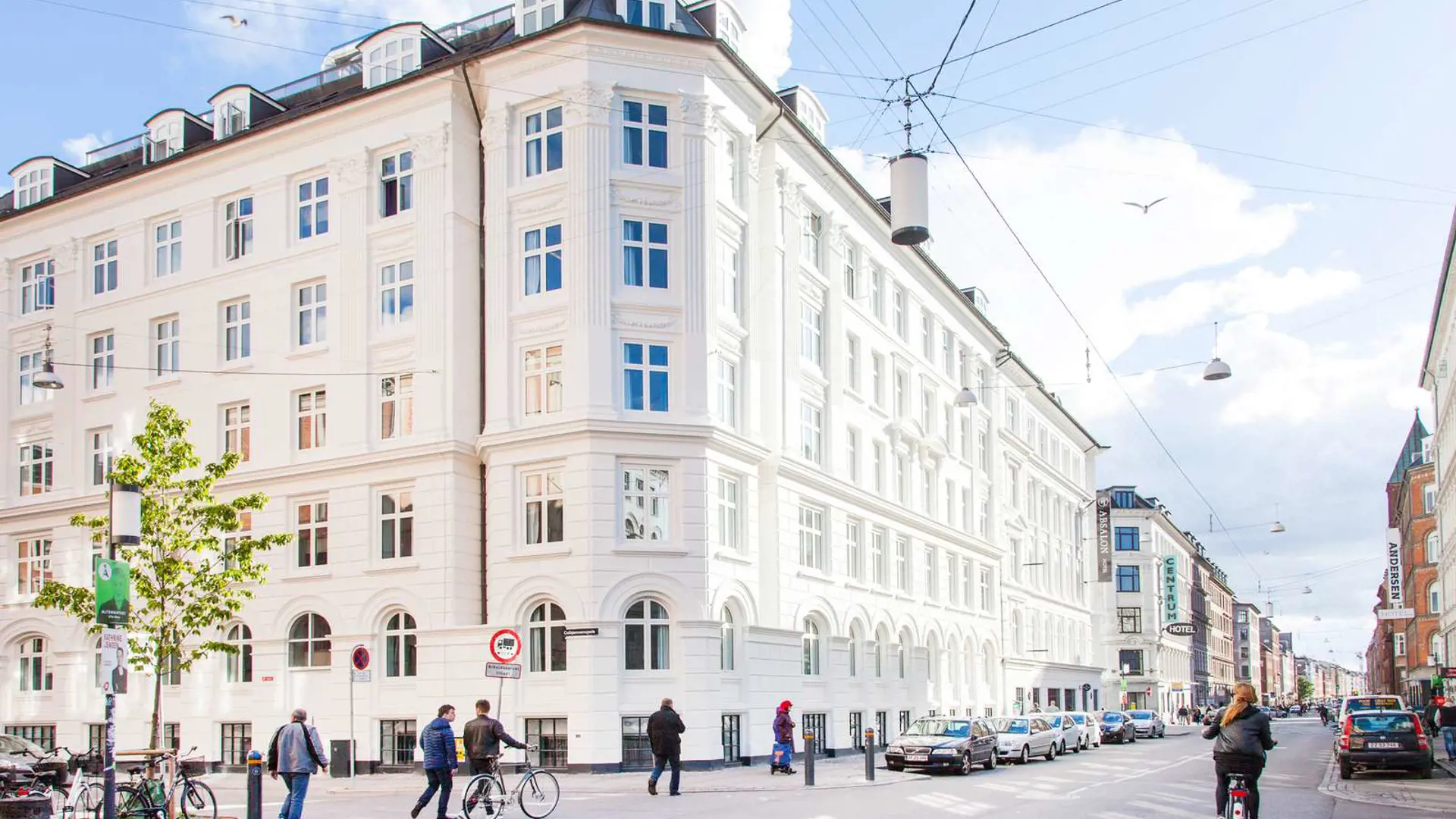
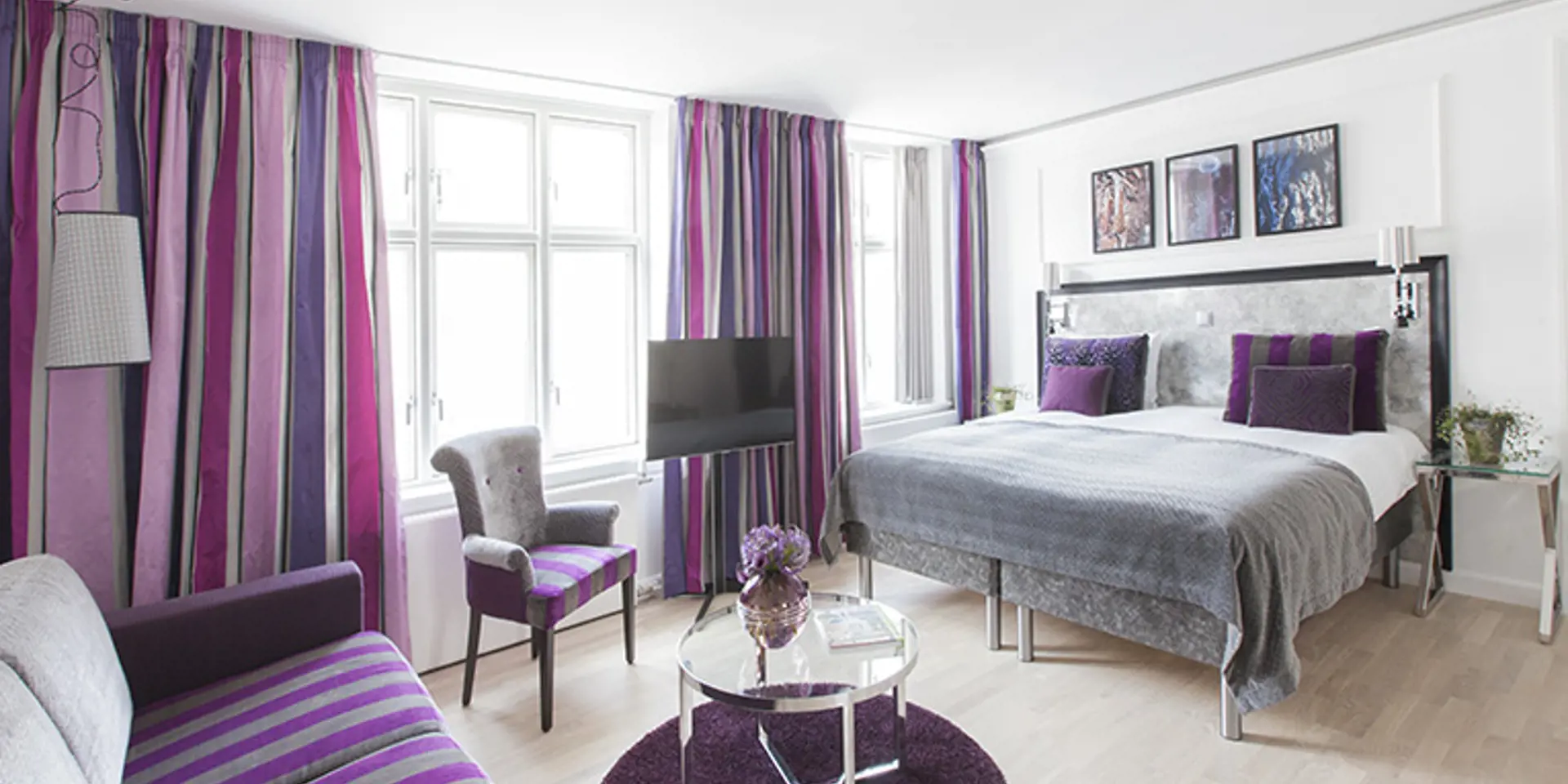
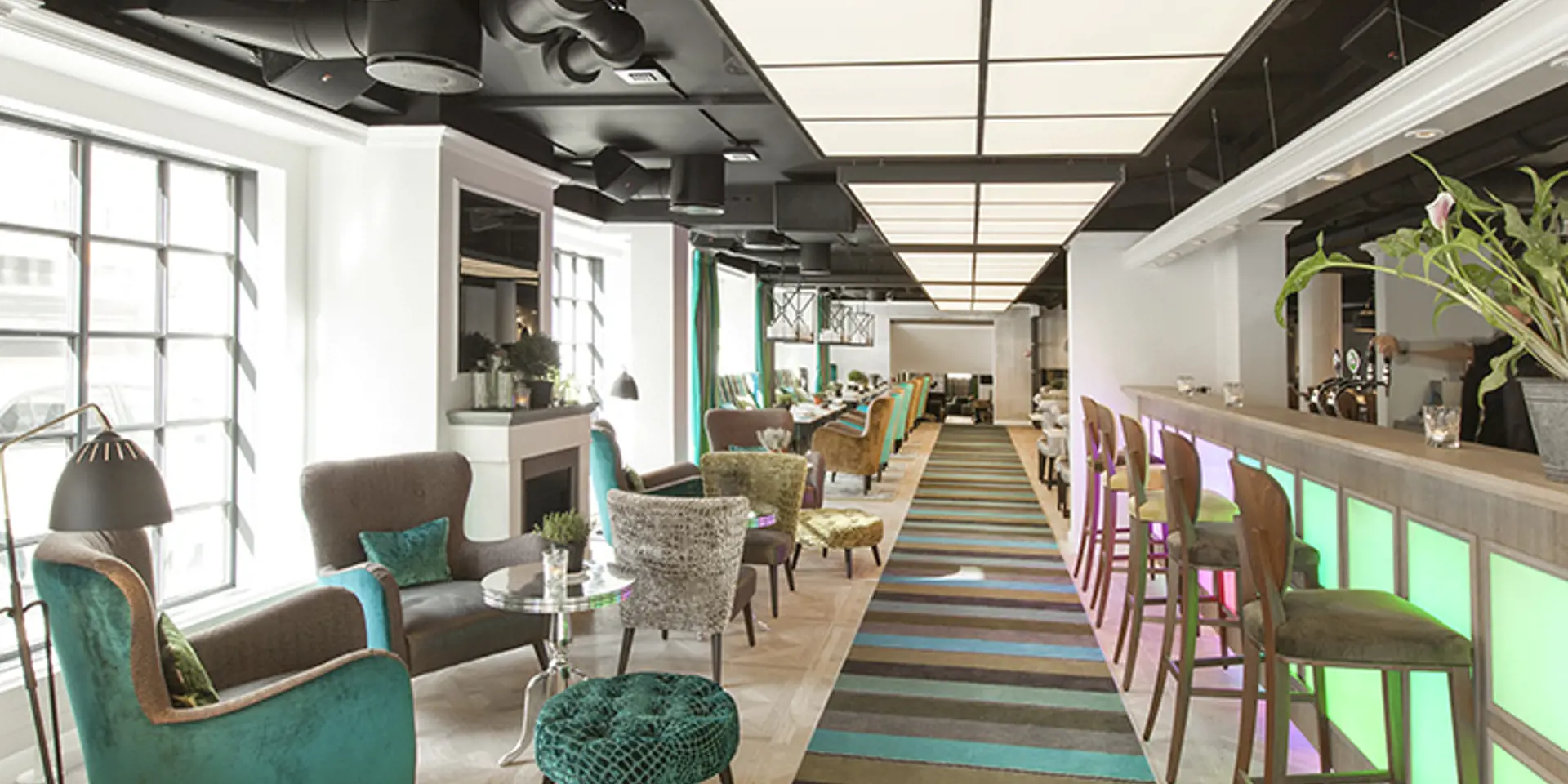
- Copenhagen Area
- Zealand
- City Break
- Weekend stay
- Super rate
Green Key approved
Helgolandsgade 15, 1653 København V Danmark



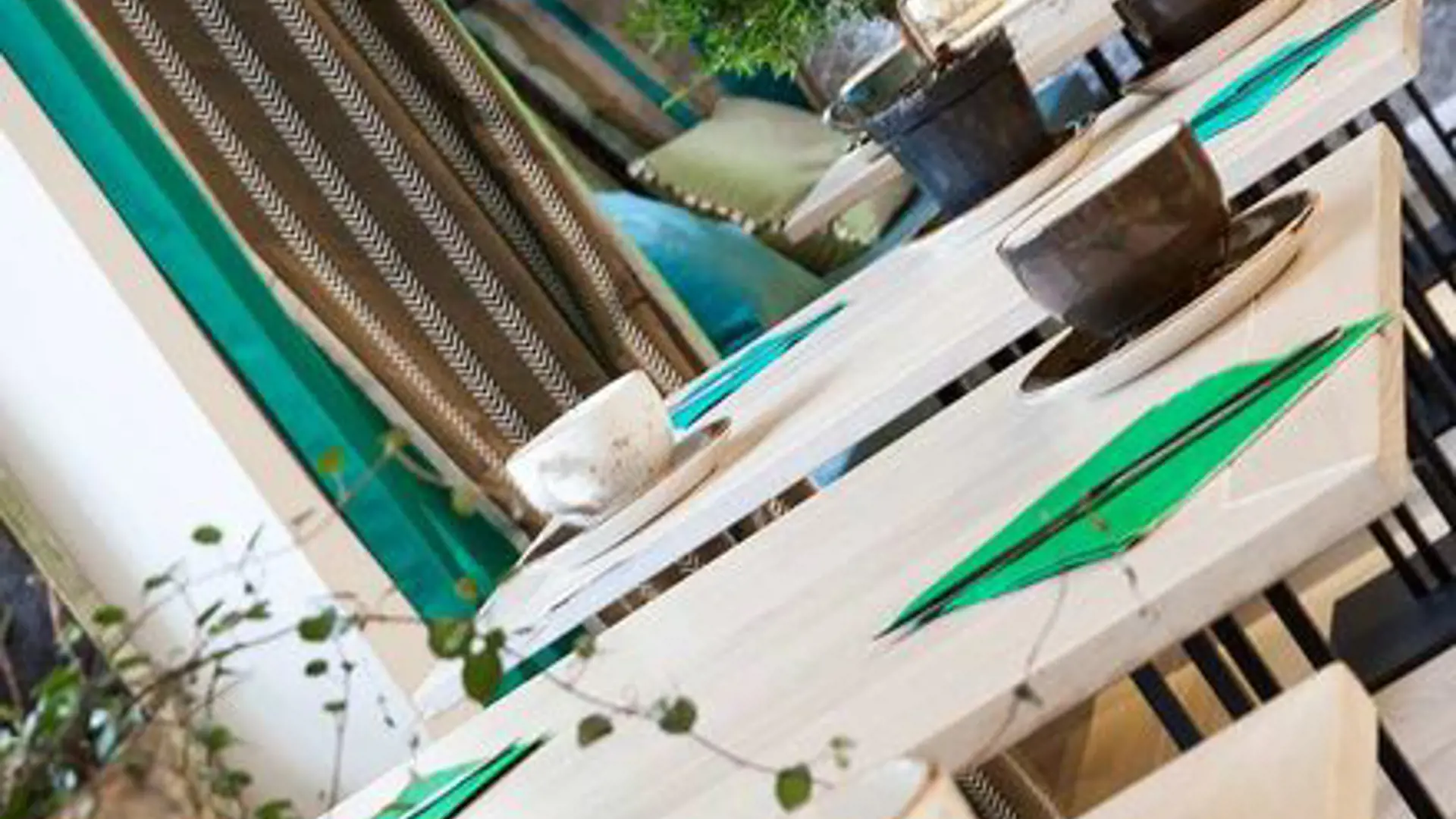
Best available rate Rate includes breakfast
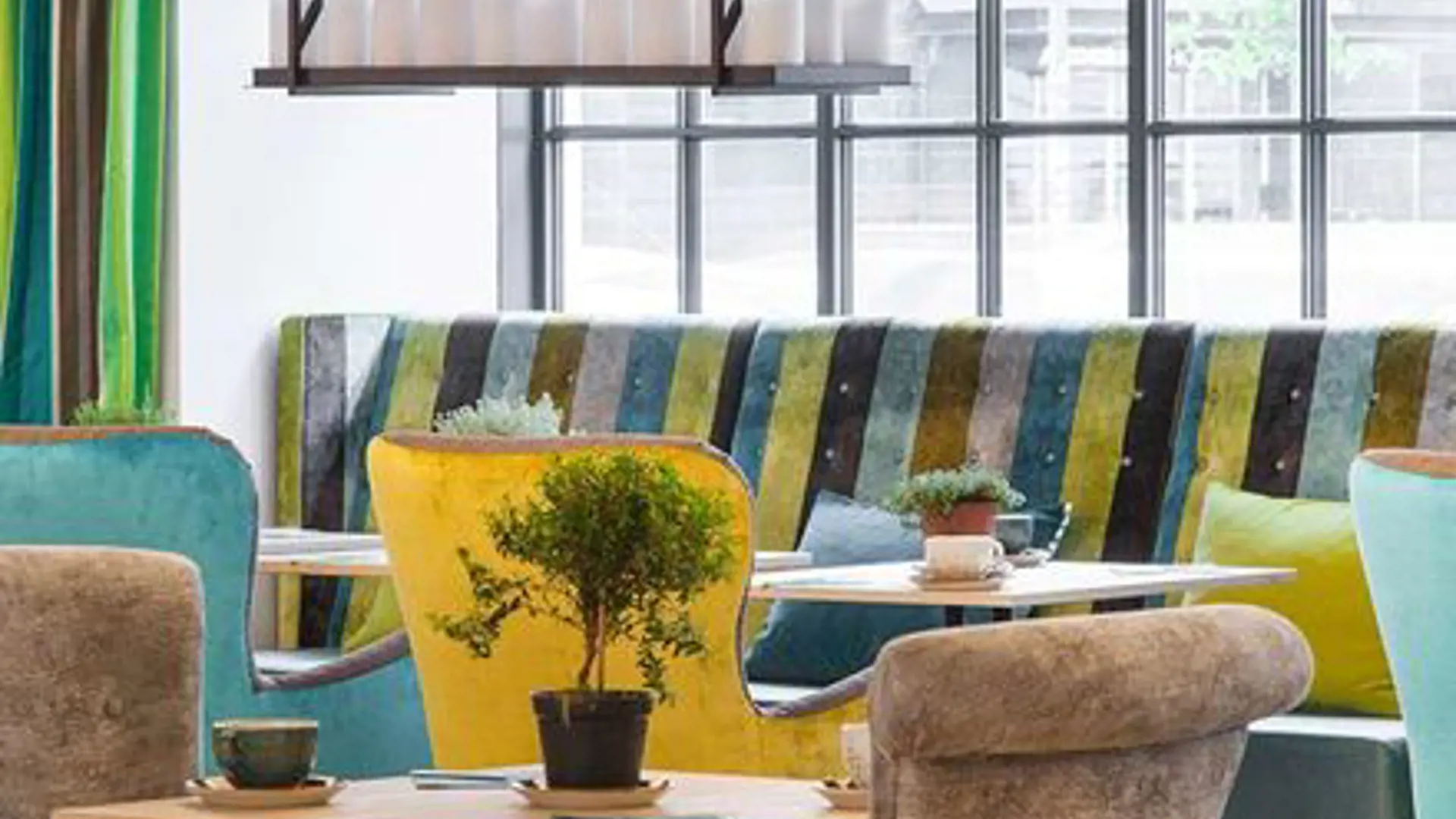
Min. 3 days/ 2 nights
Includes per person per night:
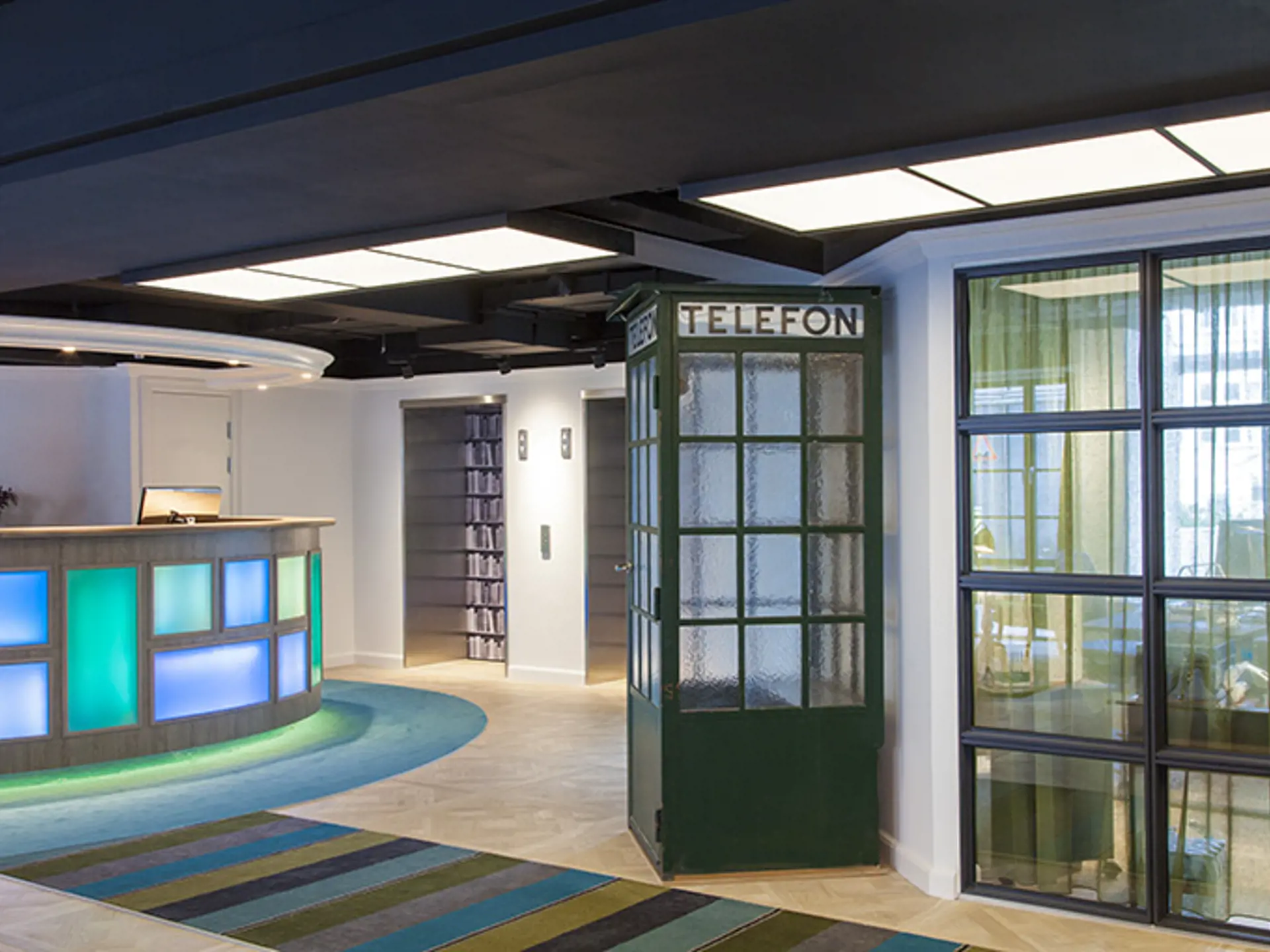
Vesterbro is the place in Copenhagen. This is where the Danish capital is indeed alive and kicking Urban & Cool at full blast. The square Halmtorvet is just around the corner with its elegant cafés, and naturally you can enjoy your Sunday brunch here. The street Istedgade is a charming combination of old taverns, new cafés, recycling shops and fancy, colourful fashion shops. Vesterbro is noise and genuine city atmosphere, but it is also possible to find calm, cosiness and room for quiet moments in the side streets.
The family-owned Absalon Hotel**** in Helgolandsgade is situated right in the middle of this brisk and lively part of the capital and takes a pride in being a place where you can feel at home when you are away from home. Karen Nedergaard, managing director, is the third generation in the hotel, and she aims at creating a modern hotel where tradition and innovation are combined. The atmosphere is informal and relaxed, and in the reception the whole staff looks forward to sharing their knowledge about Copenhagen and thus make your stay in the city a wonderful experience.
All the pleasures of the capital are within walking distance: The Tivoli Gardens, the pedestrian mall Strøget, cafés, restaurants, nightclubs, galleries and museums. After a good day with lunch in Nyhavn, a canal tour and a visit to Glyptoteket or the National Museum, it is nice to flop down into a relaxing chair in the cosy lobby of the hotel.
Cosy rooms with modern facilities, e.g. wireless Internet, pay-TV and bath tub. Free coffee/tea in the rooms. After a comfortable night you can look forward to the delicious breakfast buffet of the hotel. A few minutes walk to the Central Station, Tivoli and Strøget and 20 minutes by taxi to Copenhagen Airport Kastrup.
We strive for flawles hospitality, and work to exceed all of your expectations, and with Concept24 you'll be able to enjoy the city for a while longer. Your room is reserved for you in 24 hours from your check in. Then the morning stress is over, and after a good night's sleep you can look forward to the hotel's lovely breakfast.
Absalon Hotel has the organic food label in SILVER from the Danish Veterinary and Food Administration, and continues to work on optimizing their organic percentage.
Welcome to Copenhagen & Absalon Hotel.
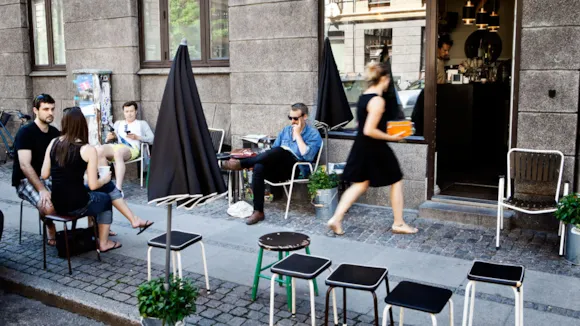
0.14 km
The infamous red light district and former working-class area of Copenhagen, Vesterbro, is actually one of the hippest areas in the Danish capital. As early as back in 2001, Wallpaper magazine proclaimed Vesterbro Copenhagen's hippest quarter, and in 2014 it made no. 4 on Thrillist's top 10 most hipster neighbourhoods on Earth.
The turnaround really began with the transformation of the old cattle market Øksnehallen into a light and stylish exhibition hall. The district is situated within walking distance of Copenhagen city centre, right behind the Central Station. It is one of the most fashionable places in Copenhagen - not just to live - but to shop, eat, drink and have a great night out.
Along Vesterbrogade and Istedgade, where you will find the original red light district on the first stretch from Copenhagen Central Station and up, you will find plenty of bars, restaurants, and designer stores. Are you looking for a fancy dinner or a fun night out go to the Meatpacking District where new restaurants and cool bars crowd the area. The quarter even boasts its own food street, frenchy Værnedamsvej – a gourmet’s paradise with specialist cheese, wine, fish and chocolate shops, as well as cafes and grocers - on the border between Frederiksberg and Vesterbro. Vesterbro is also known as Copenhagen V.
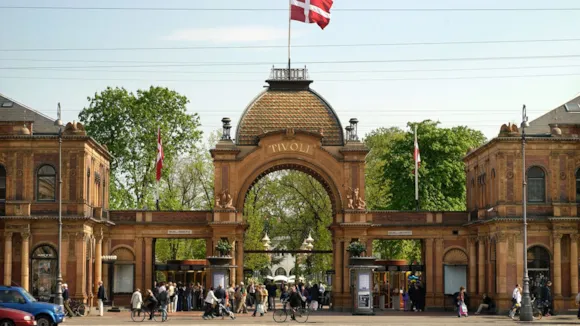
0.4 km
Tivoli is a playground for young and old and a spot so full of wonder that it inspired Hans Christian Andersen and Walt Disney. Whether you come for the gardens, music or rides, you’ll have a blast.
Tivoli Gardens was founded in 1843 and has become a national treasure and an international attraction. Fairytale writer Hans Christian Andersen visited many times, as did Walt Disney who even found the inspiration for his own Disney World here. When the garden was founded it was placed outside the city’s moats, but today it’s located right next to the Central station and within walking distance of City hall.
Part of Tivoli Gardens' secret is that there is something for everyone. The scenery is beautiful with exotic architecture, historic buildings, and lush gardens. At night, thousands of coloured lights create a fairytale atmosphere that is completely unique. It has quirks and charm, and details for you to discover – you might catch a glimpse of the guinea fowls or peacocks running freely through the gardens.
The rides are all designed to match Tivoli's architecture and gardens. Some rides are wonderfully nostalgic, while others will match the expectations of the keenest thrill seekers. Tivoli’s oldest and most popular ride, the wooden Rollercoaster from 1914, is one of only seven rollercoasters worldwide which have a brakeman on board every train. In contrast, you’ll also find Vertigo, which will turn you upside down at 100 km/h. It was voted Europe’s Best Ride in 2014.
The newest ride of all is Villa Vendetta, Denmark's largest permanent haunted house complete with actors, where guests embark on a journey through 12 different rooms spread over 800 spooky square meters.
TRAVEL TIP: With a Copenhagen Card in your hand you get free admission to Tivoli and over 80 attractions as well as free public transportation in the whole capital region.
When it comes to food, Tivoli is equally diverse. Lots of people will bring picnics to the garden, but you can also choose from Tivoli's broad selection of restaurants. You'll find everything from traditional Danish cuisine to French bistro to gourmet burgers. Tivoli has a seafood bistro, Figaro as well as the world-renowned burger chain, Gasoline Grill, and one of the city's very best vegetarian restaurants, Gemyse.
If you’re up for a more relaxed, food-stand kind of food, Tivoli has got that as well. On the corner of Tivoli, towards the Central Station, you’ll find Tivoli Food Hall. The architects behind the building also created the stunning glass pyramid of the Louvre in Paris. Inside you’ll find a variety of different cuisines, from healthy Islandic dishes at Glò to delicious, hot flatbread at North-African Wakha, and everything in between.
You could also try the classy Nimb and Nimb Hotel, which are situated in Tivoli Gardens. They have a variety of different restaurants – for example in the restaurant Fru Nimb, you can get traditional Danish smørrebrød (open-faced sandwiches). There is also the outstanding patisserie Cakenhagen to enjoy for its coffee, cakes and champagne.
Want to know more about dining in the city centre? Check out our guide.
The music program in Tivoli has exciting events to offer every year no matter your age or genre preferences. Besides major events such as Friday Rock and Summer Classic, there is live music in Tivoli every single day. See Tivoli Gardens' music calendar.
Tivoli has opened throughout the year with a variety of themed attractions. Halloween, Christmas, winter and summer each have their own uniquely themed season in Tivoli, where the gardens are redecorated to convey the cosy winter vibes, the hearty Christmas feeling, and the nostalgic long summer days and scary Halloween. Check out the opening hours of each season on Tivoli's website.
Tivoli is among Copenhagen's top attractions. You can learn more about the top attractions here.
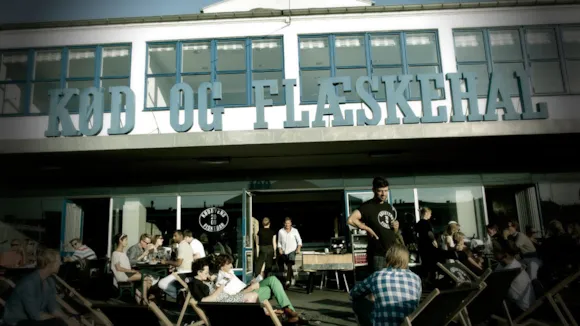
0.44 km
The Meatpacking District is an area of Vesterbro that has housed the meat industry for many decades. It consists of three separate areas called the white, gray, and brown Kødby according to the color of the buildings.
In the early 2000s, when the City of Copenhagen realized that the functionalist buildings from the 1930s in Halmtorvet might interest other than just butchers, a vision of a new cultural melting pot began to take shape. The Meatpacking District is now a creative cluster where Copenhagen's new and trendy places open, such as restaurants, nightclubs and art galleries - alongside the slaughterhouses that still operates here.
The Meatpacking District is one of Copenhagen's most popular places to go out. Among other things you find art galleries, such as V1, Gallery Poulsen, and Bo Bjerggaard, the tea shop Aunt T, and Butcher's Lab - a combined gallery and gym. The Meatpacking District is also home to a variety of restaurants. Try the organic BioMio, some of the city’s best burgers and pizza, wine and dine at Paté Paté, or eat fresh fish at Fiskebaren.
The area is known for a lively nightlife with Jolene, Mesteren og Lærlingen, and Bakken right next to each other. The buildings and facades are listed, so you will not find any big name signs on the facades. Therefore, it can sometimes be a little difficult to navigate. Likewise, many restaurants, bars and galleries preserved the old slaughterhouses tiles and raw frames.

0.44 km
At the southern end of Skt Jørgens Sø lake, you’ll find a striking modern building offering you a ticket into space. A visit to Copenhagen’s planetarium will put stars in the eyes of the whole family.
Designed by MAA Knud Munk and opened in 1989, the planetarium is named after the Danish astronomer Tycho Brahe, and aims to educate and entertain the whole family through exhibitions and 3D and IMAX films.
Immerse yourself in the starry sky, watch movies in the large Dome and explore the exhibitions. The Dome is the heart of the Planetarium and is the largest in Northern Europe, with a big screen offering you a unique experience, that makes you feel like you are part of the movie. From films about volcanoes and astronauts to space exploration and animations suitable for younger children, there is a wide variety of programming. Check the website beforehand to find out the current program and show times.
No matter what film you choose, it always starts with a journey into space and a presentation of the current starry sky.
Most movies and shows will be narrated in Danish. However, if you would like to hear the English narration, headphones are available at the entrance.
A ticket gives access to all exhibitions and one film. During school holidays and weekends, you can also experience shows and stories about the universe, with free guided tours in the exhibition area.
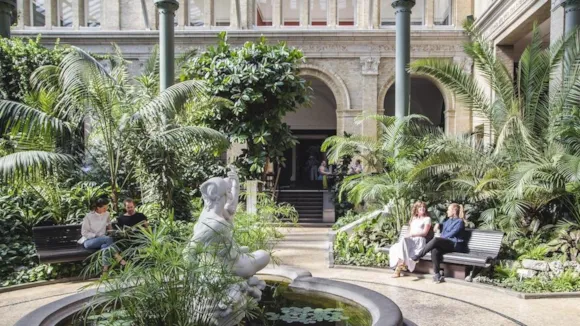
0.62 km
Ny Carlsberg Glyptotek displays ancient and modern art in truly unique surroundings. Founded in 1897 by brewer Carl Jacobsen, the gallery is renowned for its marble sculptures and winter garden.
Step inside and discover a beautiful building with high ceilings and a showstopping centrepiece winter garden full of palm trees surrounding a fountain and pond.
The Collections
The gallery is divided into ancient and modern collections. The Department of Antiquities houses excellent collections of Egyptian, Greek, Etruscan and Roman art, providing a delightful journey through 3500 years of art and history. Stroll the hallways lined with marble statues, and you can imagine yourself in Ancient Greece, Egypt or Rome.
The Modern Department focuses on Danish painting and sculpture of the 19th and 20th centuries and French art of the same period. Enjoy paintings from Denmark’s awe-inspiring Golden Age, and experience French Impressionism as well as more than 40 works by Gauguin. It is also possible to see the complete series of Degas’ bronzes and 35 sculptures by Rodin.
Special exhibitions
The Ny Carlsberg Glyptotek often holds special exhibitions which are presented as an integrated part of the museum experience. These exhibitions may require that certain works in the permanent collection, ordinarily accessible to the public, will not be on display. We recommend checking the website for information on exhibitions and current events before your visit.
In the beautiful and spacious Winter Garden, you can take a breather and refresh yourself at Café Picnic where you can enjoy a piece of cake, a light lunch, or maybe just a coffee in the peaceful surroundings. The gallery also has a small bookshop and souvenir shop.

0.81 km
Go time travelling at Denmark’s key history museum. The National Museum showcases everything from Viking treasure and the Egtved girl’s grave to Egyptian mummies, Renaissance art and the present day.
Among the many treasures to discover, visitors are invited to Meet the Vikings in an exhibition that reconstructs what Queen Tove may have looked like, alongside warrior beserkers, housewives and peasants, many shown wearing jewellery from Denmark's largest treasure troves.
Another key permanent exhibition on Danish Antiquity includes prominent national treasures such as the more than 3,000 years old Sun Chariot, the Bronze Age Egtved Girl, and an incredible collection of archaeological finds from the Viking Age. You can also see the Huldremose Woman, whose well-preserved remains are estimated to date back to the first decade of the first century AD.
The National Museum also boasts a very large ethnographical collection, a collection of classical and near eastern antiquities, a coin- and medal collection, and a toy museum. You can also visit the Victorian apartment Klunkehjemmet, practically unchanged since 1890. Note that it has different opening hours.
You can tour the museum in an hour with a self-guided tour. They include The History Tour of Denmark, The Family Tour, and The Tour around the World. In July, August, and September there are guided tours in English.
One section, dedicated especially to the very young museum visitor, is The Children’s Museum. What was the school of your great-grandmother like? Try a trip on a Viking ship, discover a kitchen from the Middle Ages, or amire the beautiful colors and feel the smooth silk in a shop from Pakistan. This hands-on part of the museum is great for children who want to play and explore.
Besides the café and a museum shop, the museum is home to the excellent Restaurant SMÖR. Here you will find Danish classics like smørrebrød (open-faced sandwiches) with a new twist. On the weekends you can try The National Museum's giant cake table with everything you could wish for. The restaurant focuses on local, seasoned ingredients and sustainability. No entrance is required when visiting the café, shop, or restaurant.
It's not just the exhibits in the museum that have historical significance – the building does too. The National Museum is located in The Prince’s Palace, built by court architect Nicolai Eigtved in 1743-44. It is no longer used by the royal family, but the Great Hall still appears elegant enough to fit princes and princesses.
The Gallery consists of a wide corridor that linked rooms and sleeping quarters and featured plenty of space for exquisite handicrafts. The stucco in the ceiling, the panels, and the oak parquet floor are all thought to be original. The furniture and stove are from the early 18th century.
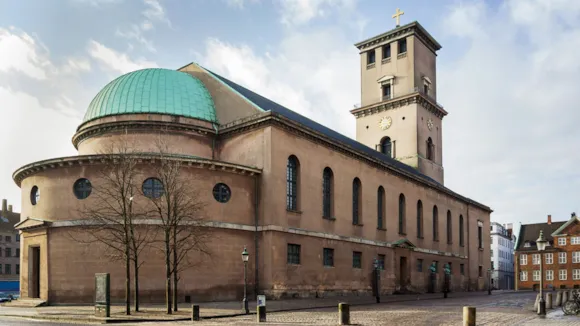
1.03 km
The Copenhagen Cathedral in its present shape is an unpretentious building in Neo-Classicist style designed by the architect C.F. Hansen. The foundation stone was laid by King Frederik VI in 1817, and the solemn consecration took place on Whitsunday 1829.
However, the site of the present cathedral has housed a church ever since Bishop Absalon, the founder of Copenhagen, had a small chapel built on the premises. The original church was erected at the highest point in the town around 1200.
The church has seen many important events throughout Danish history. This is where King Valdemar Atterdag gave away his nine-year-old daughter Margrethe - later Queen Margrethe I - in marriage in 1363, in 1855 the funeral of Søren Kierkegaard, and 2004, Crown Prince Frederik and Australian Mary Donaldson were married here.
Thorvaldsen's sculptures
The statues of Christ and the twelve apostles immediately capture the attention of the visitor. Above the altar, Christ extends his arms in a welcoming gesture, while the apostles watch from the sides of the nave. Judas has been replaced by Paul.
According to legend, Thorvaldsen resented the fact that his statues were to be placed in the niches of the church, and therefore he deliberately made them so tall that they had to be moved out onto the floor – a move that does them justice.
Battle of Copenhagen
In 1807, the cathedral was hit by an incendiary rocket during the British bombardment led by Admiral James Gambier and General Lord Cathcart. The bombardment resulted in the cathedral's burning down.
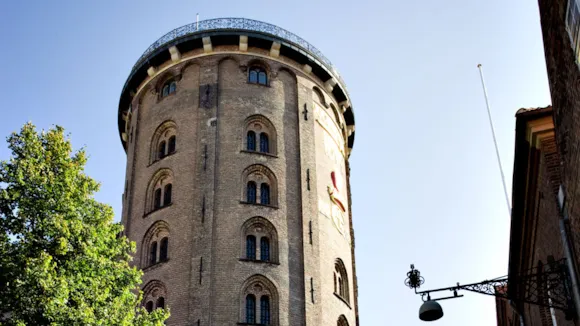
1.36 km
Located today on one of the city center's busy shopping streets, it's easy to escape the crowds and walk up the wide spiral path to the top of the tower. In fact, it's like stepping back in time as you walk up the wide spiral path that, if you believe the stories, a Russian Tsar once rode up on a horse.
King Christian IV built the tower in the early 17th century at a time when Denmark was famous for its astronomical achievements thanks to the astronomer Tycho Brahe. After Brahe's death in 1601, the King built the tower as a way to continue Brahe's research.
Today, the observatory is still used by amateur astronomers and many visitors and is the oldest functioning observatory in Europe. It's right at the top of the tower, accessed via a spiral walk. The observatory is encircled by an outdoor platform offering magnificent views of the old part of Copenhagen.
The observatory isn't the only thing you can visit in the round tower. There's also a grand library hall, which once housed the entire book collection of the university. Author Hans Christian Andersen used to visit the library and found inspiration for his work here. It's no longer a library; located partway up the spiral walkway, it's now an exhibition space hosting displays of art, culture, history, and science.
The whole tower is built with a hollow core - which a 12-year-old choir boy discovered to his dismay in 1880, when he fell down 25 metres while playing a game of hide and seek. Today you can look down the hole – in a much safer way – by standing on a glass floor 25 metres above the ground. The glass is more than 50 mm thick and can carry up to 900 kg per square meter. And don't worry – the choir boy was rescued!
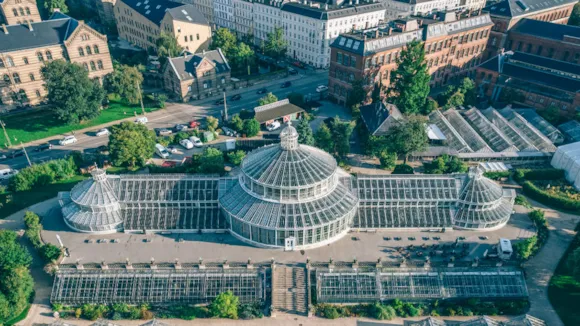
1.63 km
The Botanical Garden is Denmark’s largest collection of living plants, a few steps from Nørreport Station. It’s a free public green space to roam and relax in filled with rare trees, shrubs and herbs.
Take a walk and discover more than 13,000 species across multiple different sections including: Danish plants (600 species), perennial plants (1,100 species), annual plants (1,100 species), rock gardens with plants from mountaineous areas in Central and Southern Europe, and a Conifer Hill, planted with coniferous trees. One of the newer inclusions is a rhododendron garden. Along with gardens and historic glasshouses dating to the 19th century, the gardens also have three gene banks.
The garden was first established in 1600 but was moved twice before it was ultimately given its current location, in 1870. The garden was laid out in 1874.
The collection of 27 glass houses are particularly stunning. Dare yourself to take a walk up the 16m tall narrow, cast-iron spiral staircase inside the Palm House, which dates to 1874.
The garden also has a special air-conditioned greenhouse that can re-create environments suitable for Arctic plants.
The garden also contains a growth house, a flower shop, a café and a butterfly house (small entry fee). The butterfly house is open during the summer season only, giving visitors the opportunity to explore the butterflies’ fascinating life and transformation at close hand.
Guided tours can be arranged at mail: rundvisning@snm.ku.dk
The Botanical Garden is a part of the Parkmuseerne museum district in and around King’s Garden, just five minutes’ walk from Nørreport Station. A ticket to Parkmuseerne gives you access to all six great museums in one ticket.

1.84 km
Rosenborg Castle was built by one of the most famous Danish kings, Christian IV, in the 17th century. The beautiful castle features 400 years of royal treasures, and the Crown Jewels and Royal Regalia.
Walk up the spiral steps and discover rooms filled with royal details and lavish portraits. Among the main attractions is the Knights’ Hall with the coronation thrones, decorated with narwhal tusks, with three life-size silver lions standing guard. Tapestries on the walls commemorate battles between Denmark and Sweden.
The interiors are well-preserved and invite you to take a journey in time, stepping into the shoes of the royalty that once lived here. You can see the king’s private writing cabinet, his bathroom, and view wax figures of former royal inhabitants.
Rosenborg also houses an exquisite collection of Flora Danica and one of the world’s finest Venetian glass collections, both set in tower chambers.
TRAVEL TIP: With a Copenhagen Card in hand you get free admission to Tivoli and over 80 attractions as well as free public transportation in the whole capital region.
The delicate and glittering crowns of the Danish kings and queens are kept in special vaults at Rosenborg Castle, embellished with table-cut stones, enamel, and gold. The crown jewels primarily consist of four garnitures: a diamond set, a ruby set, a pearl set, and an emerald set – the emeralds being among the world’s finest.
The castle also displays portraits of scandal-hit Johan Friedrich Struensee and Queen Caroline Mathilde. Caroline Mathilde was married to the controversial King Christian VII and had a fatal love affair with Johan, the king's physician. When King Christian VII became too ill to govern, Struensee led the country for almost two years. He was arrested and executed in 1772, after which Caroline Mathilde was exiled to northern Germany. The portrait of Struensee is from 1824 by Hans Hansen and is a copy of a painting from the hand of painter Jens Juel. The portrait of Queen Caroline Mathilde is from 1771 and was painted by Jens Juel.
If you want to find out more about the history of the Danish Royal Family, Rosenborg Castle has a sister museum at Amalienborg Palace displaying royal history from the mid 19th century until today.
Rosenborg Castle is part of the museum district Parkmuseerne in and around King’s Garden. A ticket to Parkmuseerne costs 245 DKK and gives you access to all six great museums in one ticket. Tickets are sold at all of the six museums.
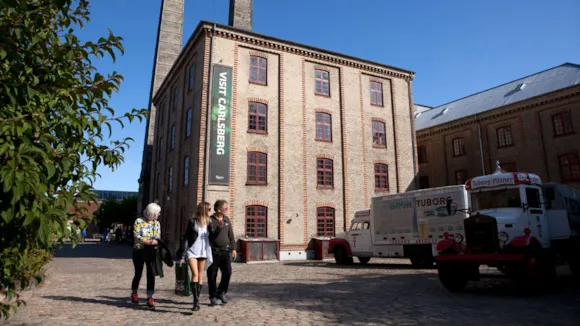
2.1 km
Carlsberg City District is an area in Vesterbro in Copenhagen, bordering to the Frederiksberg and Valby districts undergoing an interesting transformation from industry to residential, cultural and climate focused neighbourhood.
The area is named after Carlsberg's beer, which was brewed on the premises from 1847 - 2008, when the production was moved to Jutland. However the visitor centre Visit Carlsberg and Jacobsen House Brewery, which produces special brews, are still located here.
Over the next 15-20 years, the Carlsberg grounds will be transformed into a new, but historic, neighbourhood called Carlsberg City District with its very own postal/zip code: 1799 Copenhagen V.
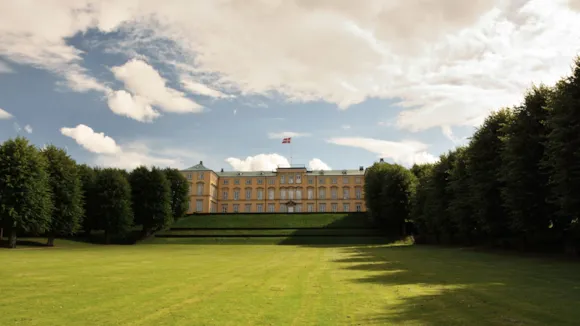
2.38 km
On top of a hill overlooking Frederiksberg Garden in Copenhagen, Frederiksberg Castle is the former summer palace of the Danish Royal Family and has seen its fair share of drama in the past 300 years.
The palace dates back to the early 1700s and is inspired by the Italian style at the time. It was used as a summer palace by King Frederik IV and was the permanent home of King Christian VI.
The mentally ill King Christian VII was born at the palace, and, with his wife Queen Caroline Mathilde and her secret lover Johan Friedrich Struensee, lived in the palace at the end of the 1700s. In the palace basement you can still see Caroline Mathilde's famous marble bathroom.
In 1768 Queen Caroline Mathilde gave birth to the king's son, the future King Frederik VI. The royal family left Frederiksberg Palace in 1852 and have not lived there since; in 1869 the Royal Danish Army Officers Academy moved in.
There are guided tours at Frederiksberg Castle on the last Saturday of each month. You can visit Frederiksberg Castle's website for more information about guided tours for groups.